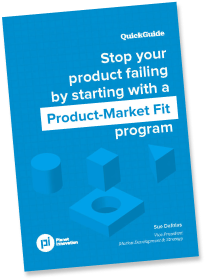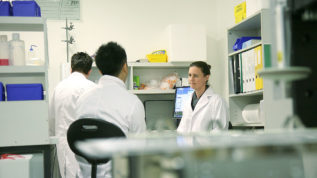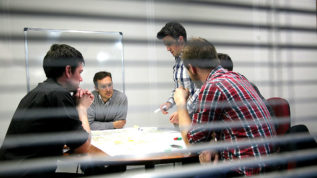
Developing new products is a costly exercise and the path is often unclear. That’s why you need to be sure you’re building the right product for the right market, before you start designing. At PI, we have developed a five-stage program to help you achieve product-market fit and give your product the best chance of commercial success.
Over the years, I’ve seen a lot of products fail for completely avoidable reasons. In fact, experts believe that at least 35 per cent1, and possibly up to 90 per cent, of all new products are commercial failures. Among the most common reasons for these failures are a lack of understanding of the customers’ needs and wants, poor value propositions, and issues with the product itself (i.e. it doesn’t work properly, it’s not user-friendly, it has the wrong features etc). In other words, they didn’t achieve a good product-market fit.
I believe that a lot of these problems could have been avoided if the developers had done a more thorough investigation into the market and customer needs prior to product definition. As we often say at PI, the greatest opportunity for innovation exists before the product development process even begins.
So how do you go about gaining this insight? Do you do it in-house? Do you outsource? Both options have pros and cons. Doing the research in-house means you can draw on your existing market knowledge and industry expertise when speaking to customers. The flipside of this is that you risk letting your own assumptions influence the outcome of the research. Outsourcing to a market research firm brings objectivity, but it is unlikely they will have the technical or industry knowledge to be able to delve into specific features with users. What’s more, at the end of the project, the market research firm will give you a report of the research findings, but you’ll still have to do the hard work of translating this insight into product requirements.
This is where companies like PI come in. We have a Product-Market Fit (PMF) team that brings commercial expertise, technical product development skills and medical industry knowledge, as well as the objectivity that comes from not being the ones dealing with customers day in and day out.
Our PMF program predominantly focuses on the problem space, rather than the technology solution. We explore questions like: What are the key problem(s) in the market that need to be solved? Does the technology being investigated solve the market problem(s)? What market segment(s) are most suited to the technology concept under investigation?
The program includes traditional market research elements such as market and competitor analysis and customer interviews, but goes further – using our product design knowledge to translate this market insight into a recommended production definition, including product feature priorities.
The program is flexible and can be tailored to align with client needs, but in an ideal world it incorporates five key stages.
Want to learn more about PI’s PMF program, including a detailed description of each phase? Fill out your details below to access the full article and receive an eguide for your reference.
Fill out your details below to access the full article and receive a QuickGuide for your reference.

Sue is Vice President, Market Development & Strategy at Planet Innovation, specializing in Product-Market Fit. She is a market development leader with over 20 years’ experience in strategy, sales, marketing and product commercialization, from product creation to sales and marketing execution.
A roundup of the latest news and opinions from PI.

Good voice-of-customer (VoC) research requires you to be part detective and part psychologist. You are trying to solve a puzzle through questions and observations that will help you determine your product direction, your regulatory strategy and your commercialization path. And it’s not a simple puzzle to solve.

The product development journey can be exciting but harrowing for even the most experienced company let alone the first time innovator. Here are a six principles that successful companies follow.

Speaking at an American Chamber of Commerce event, our Co-CEO and Co-founder Stuart Elliott offered insight into three fundamentals that organizations need to get right if they are serious about innovation.

What makes a product great? Iconic? Whatever the quality, the decision is made, neither by the team that created it nor the marketer who sold it, but by the people who use it. So that is where we start when we design a new product – with people. And that design must be more than skin deep.
 Commercialization
Commercialization
Good voice-of-customer (VoC) research requires you to be part detective and part psychologist. You are trying to solve a puzzle through questions and observations that will help you determine your product direction, your regulatory strategy and your commercialization path. And it’s not a simple puzzle to solve.